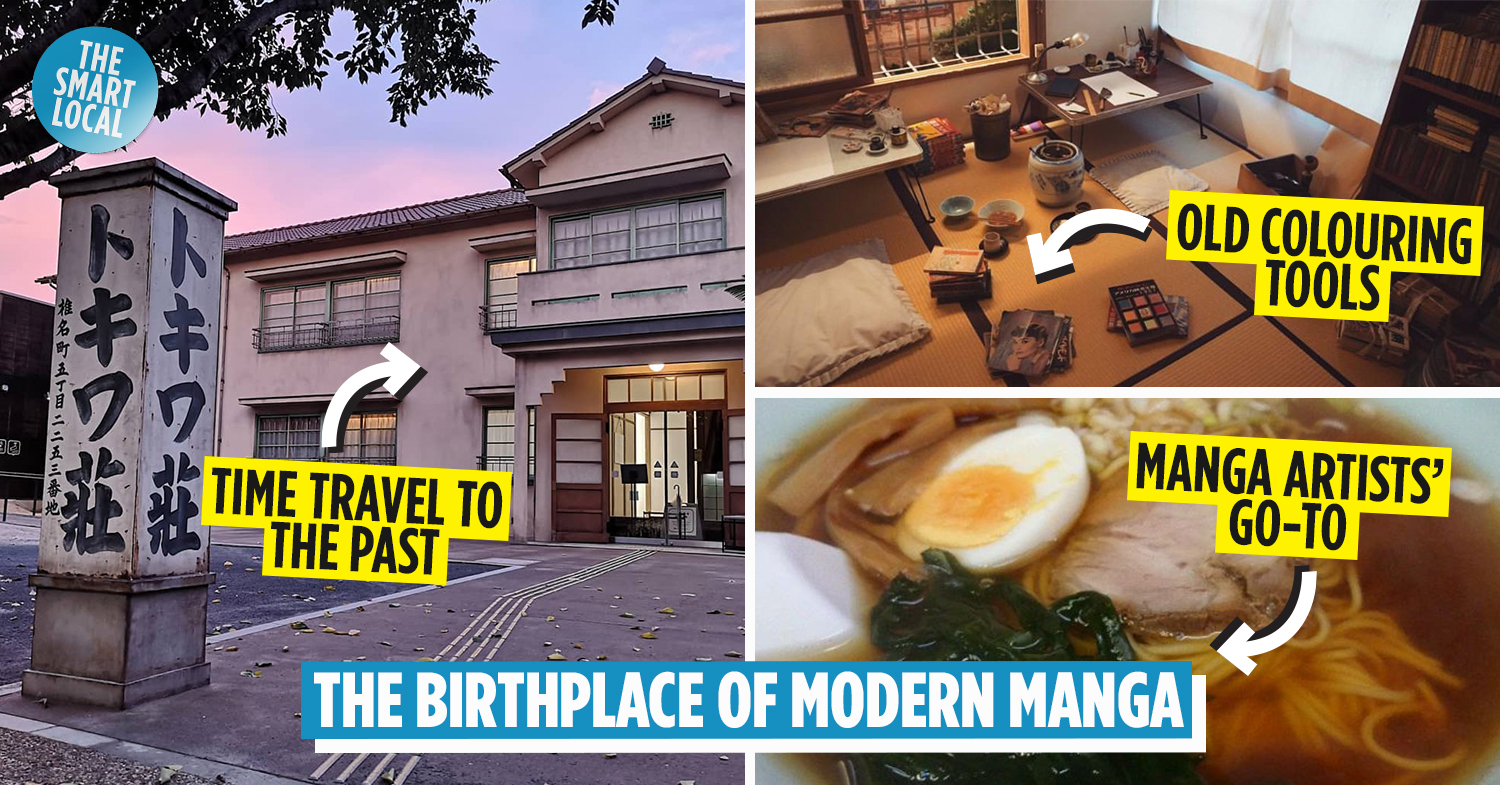Tokiwaso Manga Museum
Given manga’s popularity, you’d occasionally wonder how it became so huge. If you’ve had enough of dismissing it as a mere shower thought, head over to Tokiwaso Manga Museum – otherwise known as the birthplace of modern manga – and satisfy your curiosity.
Realistic recreation of living conditions in Tokiwaso
Tokiwaso Manga Museum is a replica of Tokiwaso (トキワ荘), a rental apartment building that famed manga artists – including Osamu Tezuka (Astro Boy), Fujiko Fujio (Doraemon), and Shotaro Ishinomori (Kamen Rider) – used to live in.
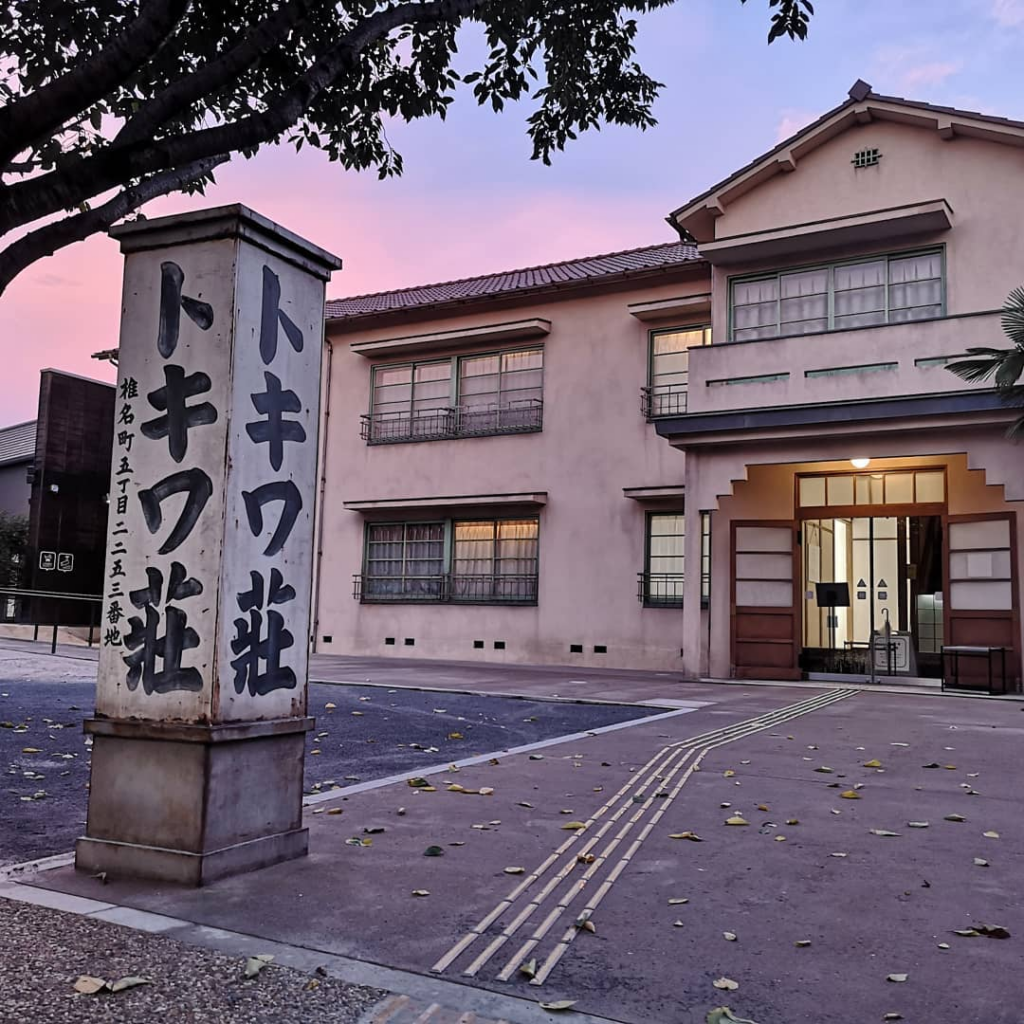
Tokiwaso Manga Museum is built in a park near Tokiwaso’s original location.
Image credit: @ikebukuro_geek
The apartment’s first occupant, Osamu Tezuka, is fondly known as the Father of Manga, as his works reportedly helped structure modern Japanese manga and animation.
For instance, he introduced long-form manga, which gave room for more concrete storylines compared to gag comic strips. This new style also birthed the concept of manga genres.
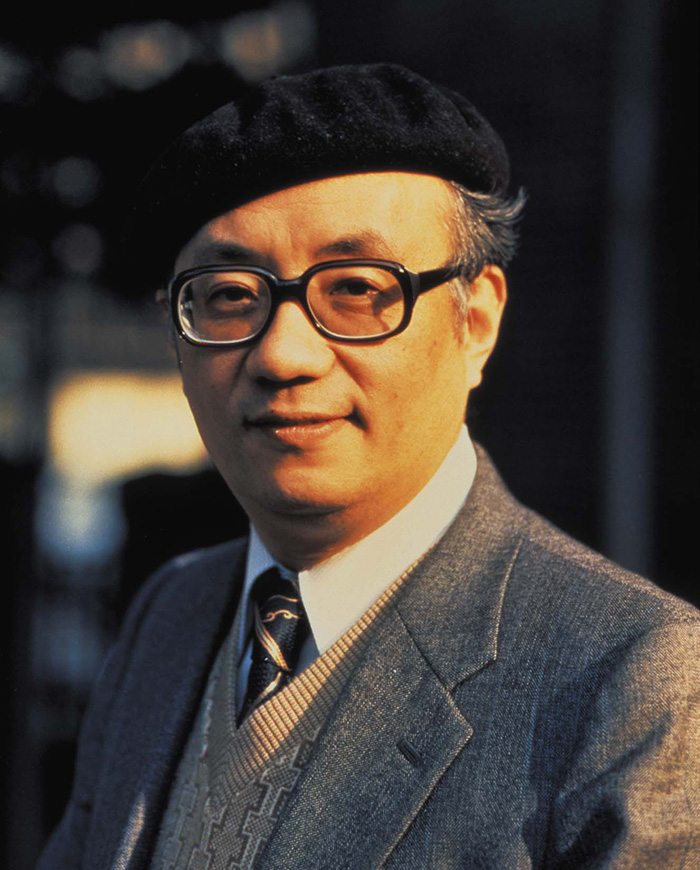
Manga artist Osamu Tezuka.
Image credit: Tezuka Productions
The actual Tokiwaso was torn down in 1982 due to severe wear and tear, and a publishing house now sits in its original location. Nevertheless, you can still view a monument of Tokiwaso there.
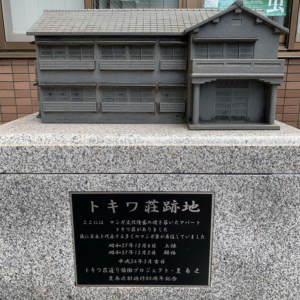
Image credit: @tommy125s
Tokiwaso Manga Museum recreates the space that manga artists previously stayed and worked in, ranging from the overall old-style atmosphere to individual rooms. Just a props up – the furnishings are hyper realistic.
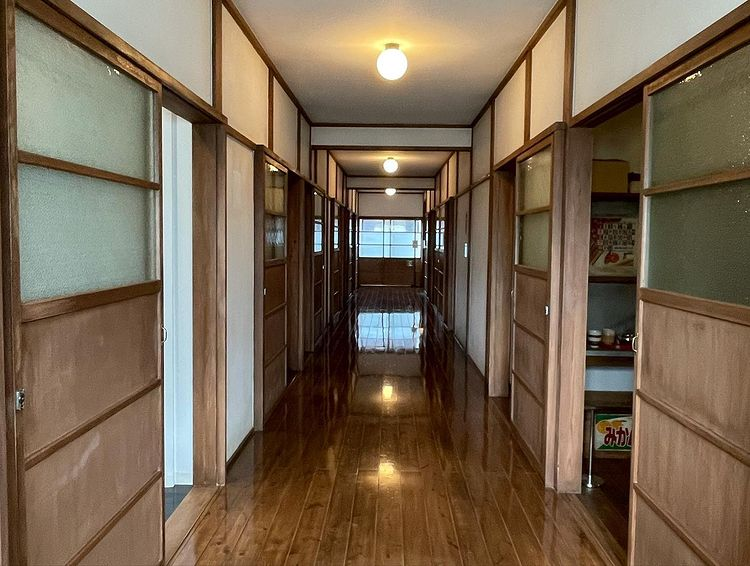
Image credit: @5838.h
Due to the absence of a bathing area, the resident manga artists frequented nearby sentos (public baths) to upkeep their personal hygiene. They also had to use squat toilets and urinals, not the comfortable bidets that are commonplace now.
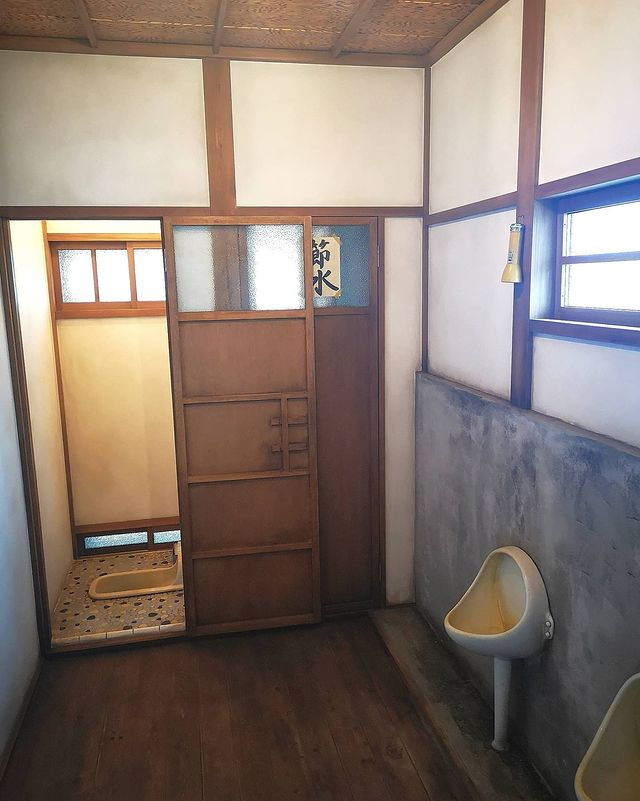
Image credit: @wendy_love_peace
The moment you enter the communal kitchen, you will see a long dining bench with several bowls and heat stains on it. However, there are no chairs in sight.
Given that there were several manga artists living together at any point in time, perhaps the shared kitchen area was too narrow to accommodate seating.
The kitchen further features an older stove system, where gas hoses are visibly connected to cooking appliances.
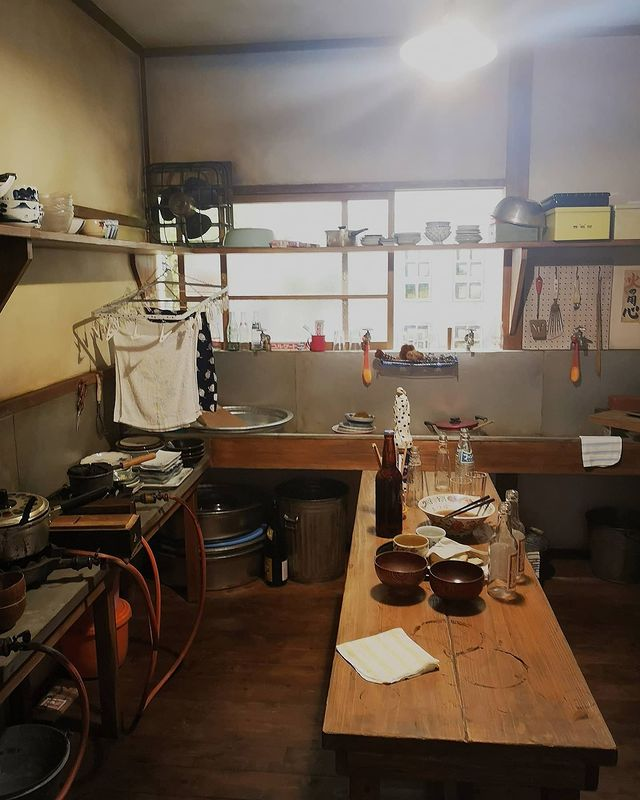
Image credit: @wendy_love_peace
There are also shochu (type of Japanese liquor) and soda bottles lying around. Shochu is relatively cheaper compared to other alcohols, so we’re assuming that the housemates made it their drink of choice because they hadn’t grown famous enough to earn much back then.
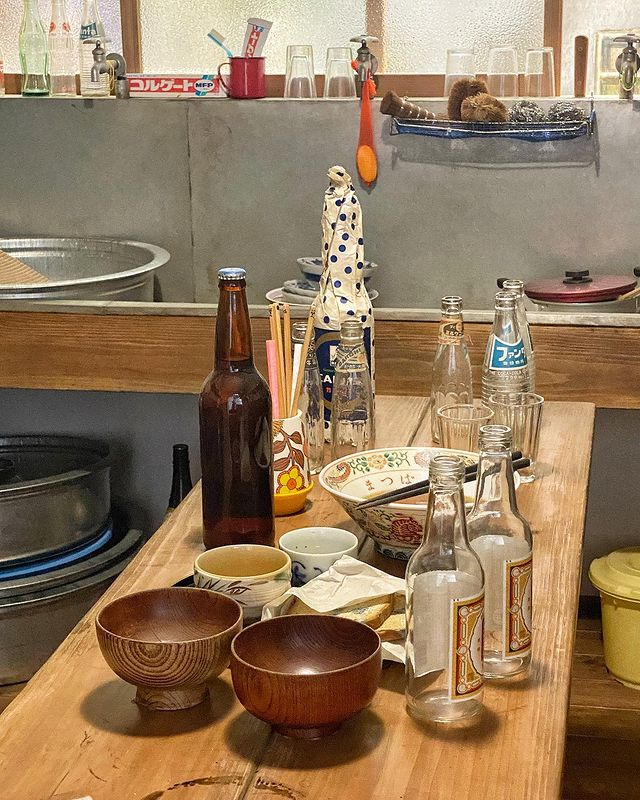
Shochu and soda bottles.
Image credit: @martakrulak
Move on to the residential rooms in this replica building, and you’ll see how the pioneers of manga had to do everything – from drawing to colouring the comics – manually.
Room 18 has various colouring and drawing tools that the artists used back in the day.
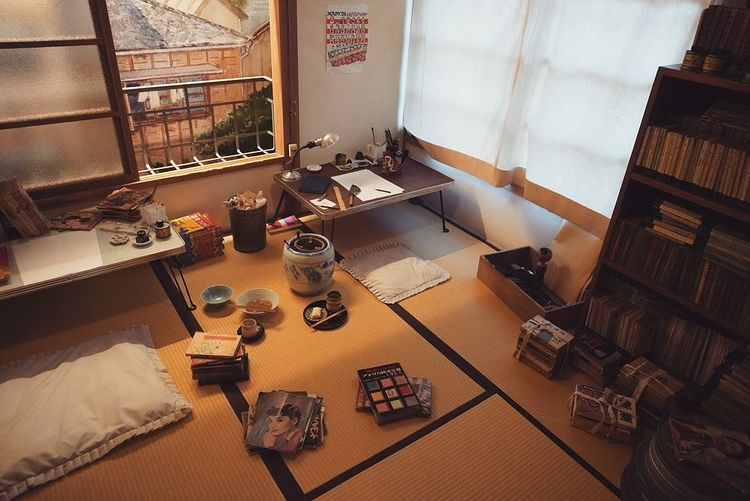
Image credit: @hzgrms
This same room has a bowl of leftover ramen to let visitors see that manga artists led such busy schedules that they had to eat their meals while slaving over their art.
Old ramen store frequented by manga artists
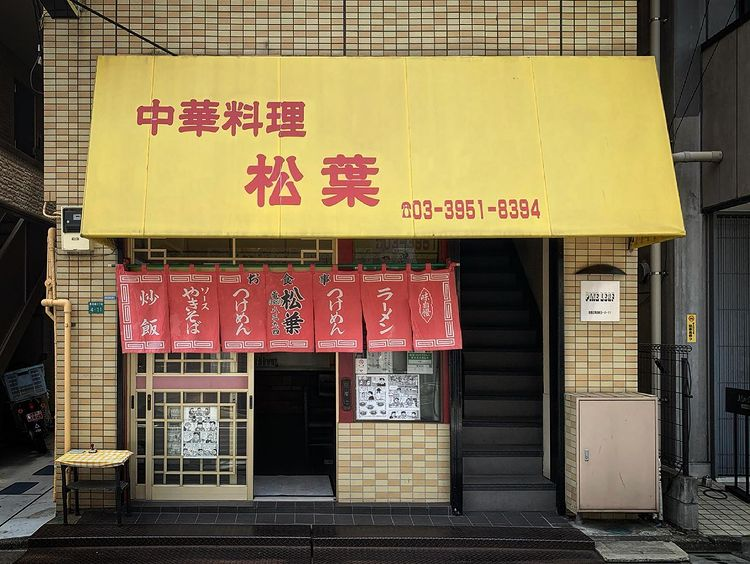
Image credit: @k9summer
In fact, the bowl of ramen is from Matsuba (松葉), a nearby ramen store that has existed since the manga artists lived at Tokiwaso. Drop by this restaurant and try a bowl of the authentic noodles for ¥600 (~USD4.36).
A couple of manga artists favoured the noodle dish so much that they included it in their works.
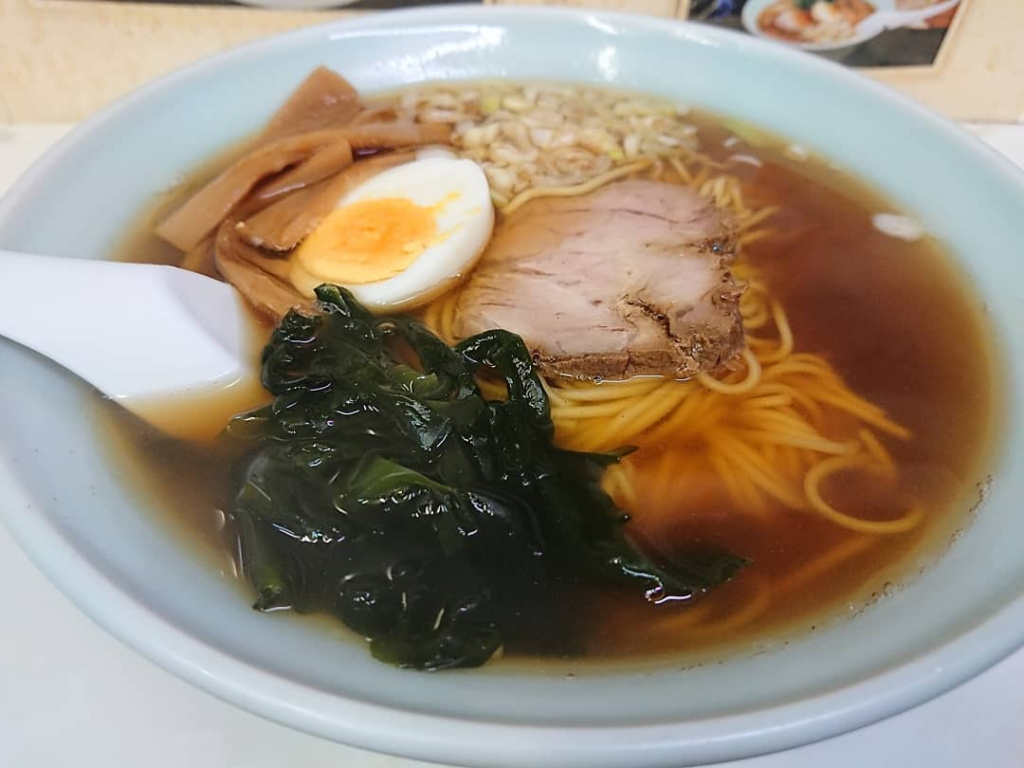
Image credit: @i_n_a_z_m_s
For instance, Fujiko Fujio featured Matsuba in the Manga Dou (まんが道) manga series. The specific page is framed at Matsuba’s storefront for public viewing.
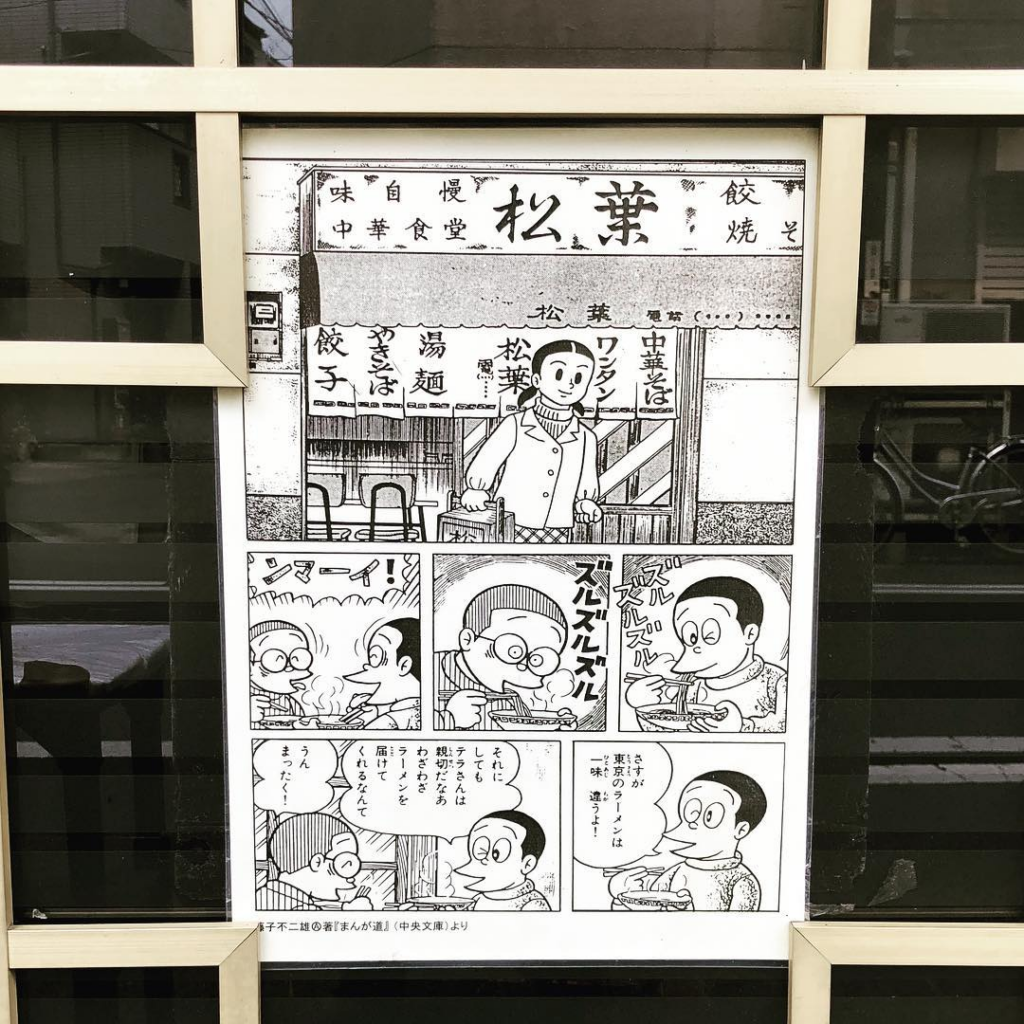
Ramen store Matsuba in the Manga Dou manga series.
Image credit: @moohash
Getting to Tokiwaso Manga Museum
Tokiwaso Manga Museum is a must-visit place, especially for manga lovers. The museum is located within 15 minutes on foot of 3 different train stations, which means lower chances of getting lost.
- 5-minute walk from Ochiai Minaminagasaki Station Exit A2
- 10-minute walk from Higashinagasaki Station South Exit
- 15-minute walk from Shiinamachi Station South Exit
Tokiwaso Manga Museum
Address: 3 Chome-9-22, Minaminagasaki, Toshima City, 171-0052 Tokyo
Opening hours: Tue-Sun 10am-6pm (Closed on Mondays) (Last admission at 5.30pm)
Admission: Free, but an entrance fee is required for some exhibitions. Online reservation is required.
Contact: 0369-12-7706 | Tokiwaso Manga Museum website
Tokiwaso Monument
Address: 3 Chome-16-6, Minaminagasaki, Toshima City, 171-0052 Tokyo
Matsuba
Address: 3 Chome-4-11, Minaminagasaki, Toshima City, 171-0052 Tokyo
Opening hours: Tue-Sun, 11am-3pm & 5pm-8pm (Closed on Mondays)
Contact: 0339-51-8394
Also check out:
- Best museums to visit in Japan
- 16 Shounen manga to read at one go
- Ice cream ramen
- Museum showcasing Pokémon skeletons and fossils
- Train station with cat stationmaster
Cover image adapted from: @ikebukuro_geek, @hzgrms and @i_n_a_z_m_s
